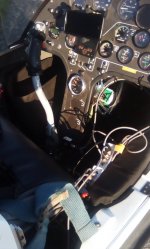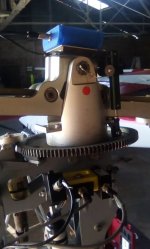Mike G
Junior Member
- Joined
- Jun 16, 2005
- Messages
- 1,918
- Location
- Lillebonne France
- Aircraft
- Owned Magni M16 now ELA 07
- Total Flight Time
- 550FW + 500 gyro
Here is a video I managed to take today that gives an idea of what my Gyro Warning System does. I had an air compressor failure that meant I didn’t have trim, rotor brake or pre rotator so had to use the manual system. It was bl..dy cold and the ceiling was pretty low limiting what I could do.
The first TO is with 150 Rrpm, pre rotator off and WOT. You can hear the warnings « Flapping Risk » followed by « Flapping, Flapping, Flapping »
The second TO is 200 Rrpm but leaving the stick forwards, you can hear the warnings « Flapping Risk » followed by « Flapping, Flapping, Flapping ».
The third TO is done simulating a Hot, Heavy and High TO, it was none of those so I simply took off with less power. You can hear the alarm « Behind the curve ».
You can then see a downwind leg where I pull up on the stick and then push. This gives the warning « low G bunting risk ». If I continued to push it would give the alarm « Bunting Bunting Bunting ». This alarm still needs some work.
You can then see that I make too tight a turn onto base and finals and loose airspeed. The alarm « Behind the curve » sounds followed by « Max power descending » as the speed falls even further.
During the landing there is the inevitable "behind the curve" just before touch down.
Mike G
The first TO is with 150 Rrpm, pre rotator off and WOT. You can hear the warnings « Flapping Risk » followed by « Flapping, Flapping, Flapping »
The second TO is 200 Rrpm but leaving the stick forwards, you can hear the warnings « Flapping Risk » followed by « Flapping, Flapping, Flapping ».
The third TO is done simulating a Hot, Heavy and High TO, it was none of those so I simply took off with less power. You can hear the alarm « Behind the curve ».
You can then see a downwind leg where I pull up on the stick and then push. This gives the warning « low G bunting risk ». If I continued to push it would give the alarm « Bunting Bunting Bunting ». This alarm still needs some work.
You can then see that I make too tight a turn onto base and finals and loose airspeed. The alarm « Behind the curve » sounds followed by « Max power descending » as the speed falls even further.
During the landing there is the inevitable "behind the curve" just before touch down.
Mike G
Last edited:



